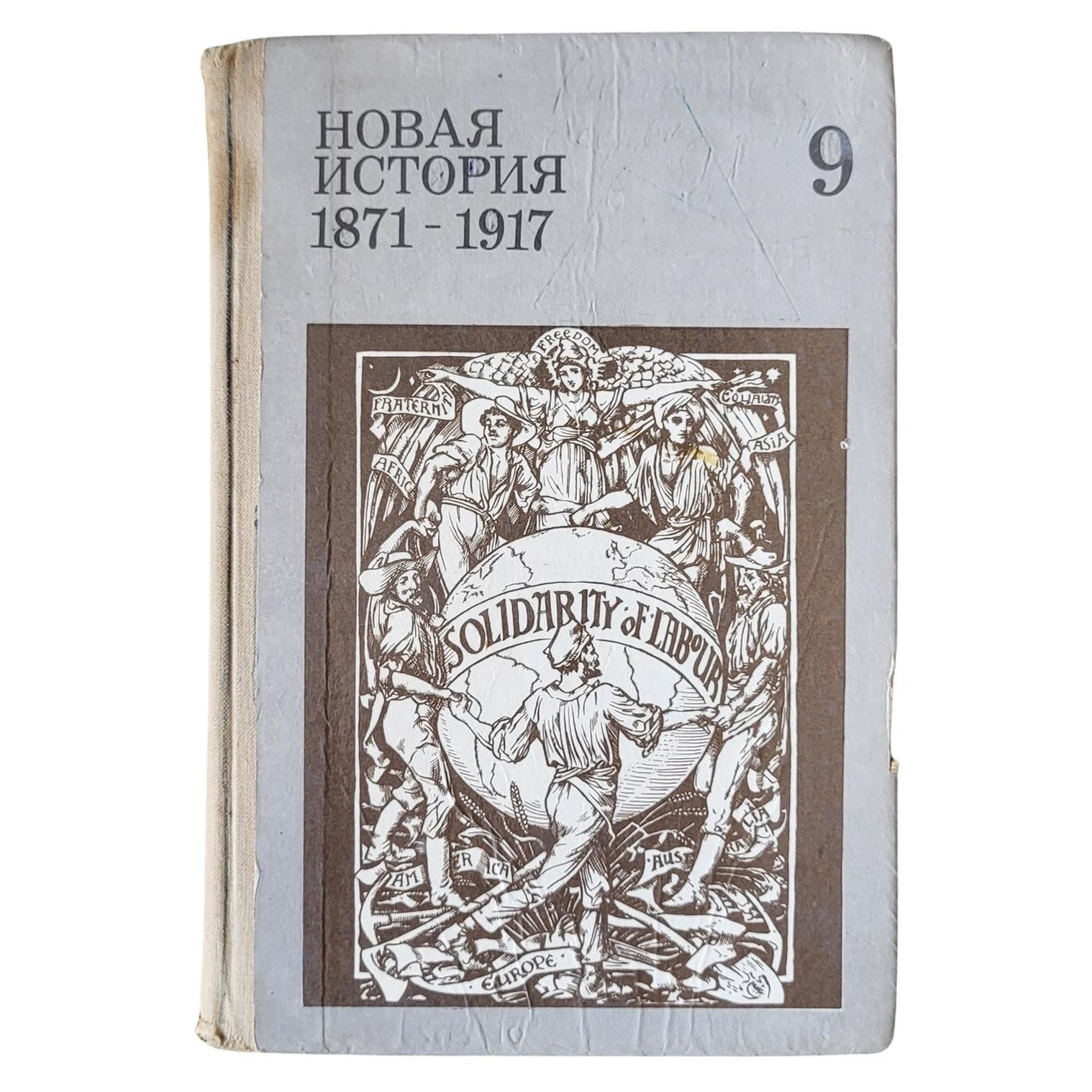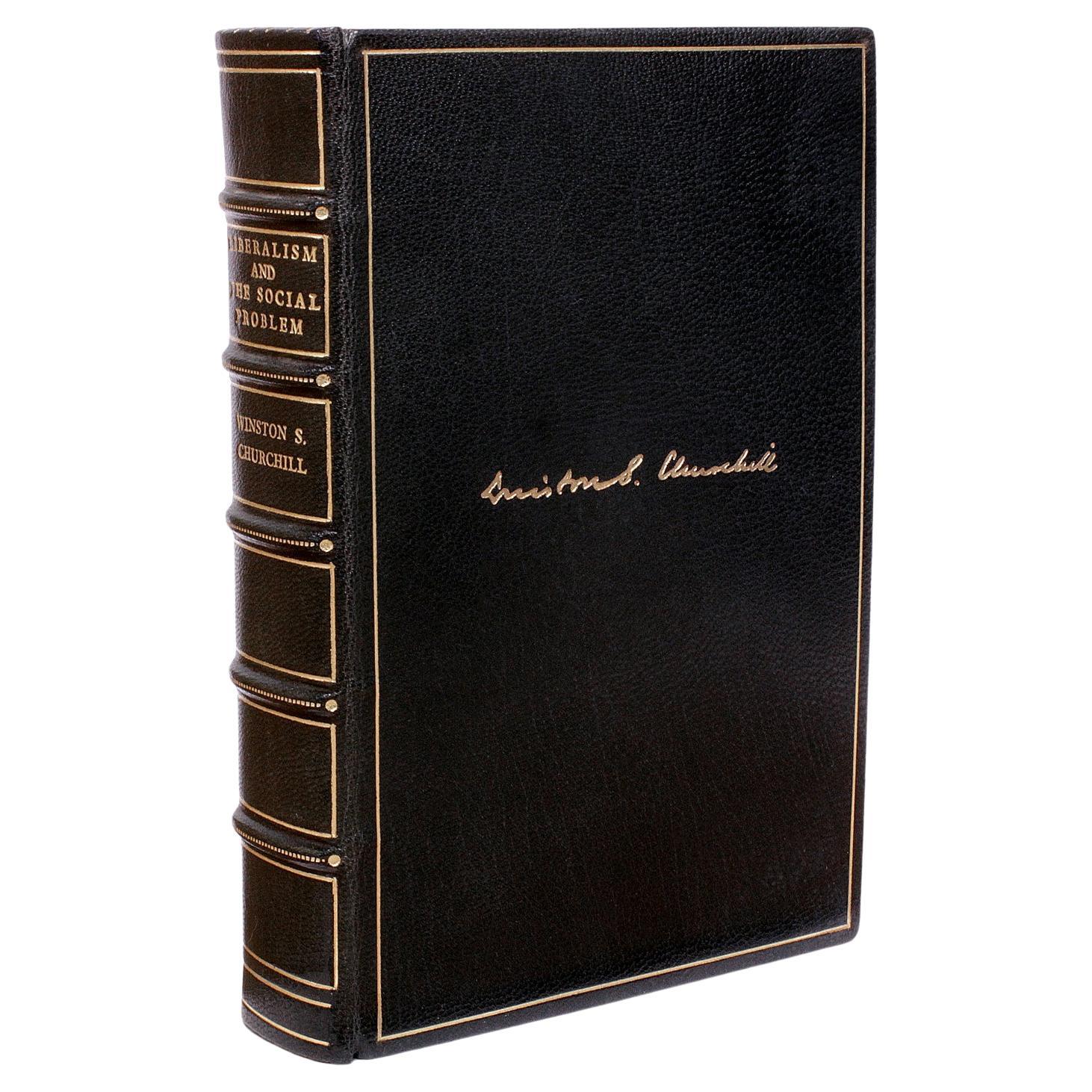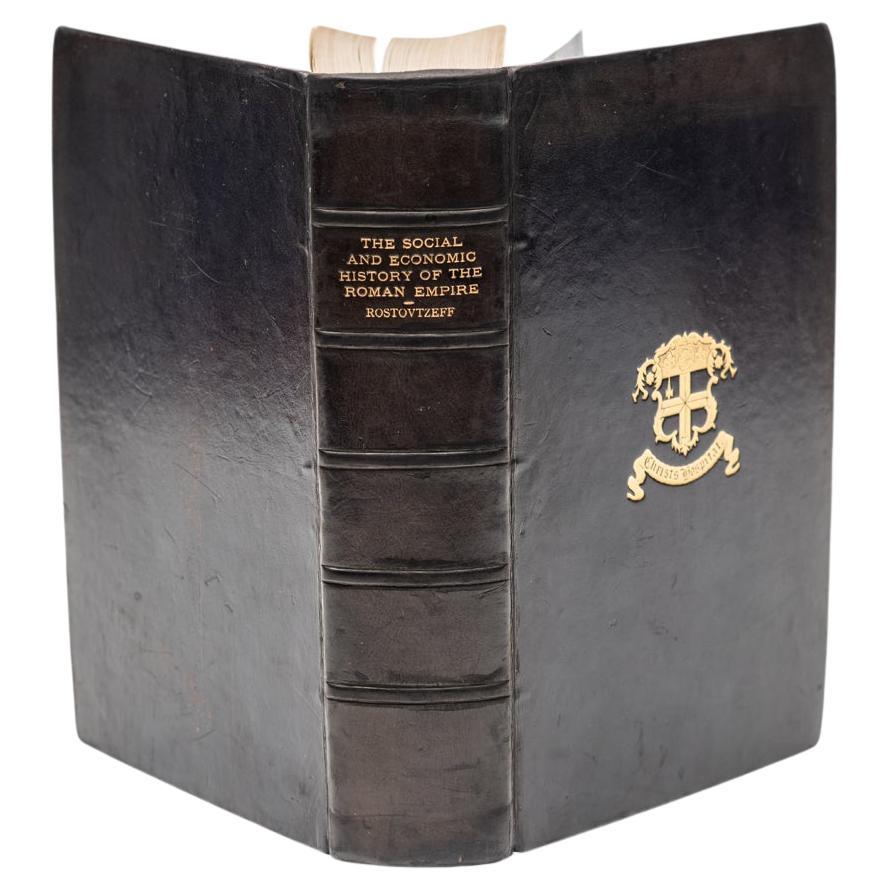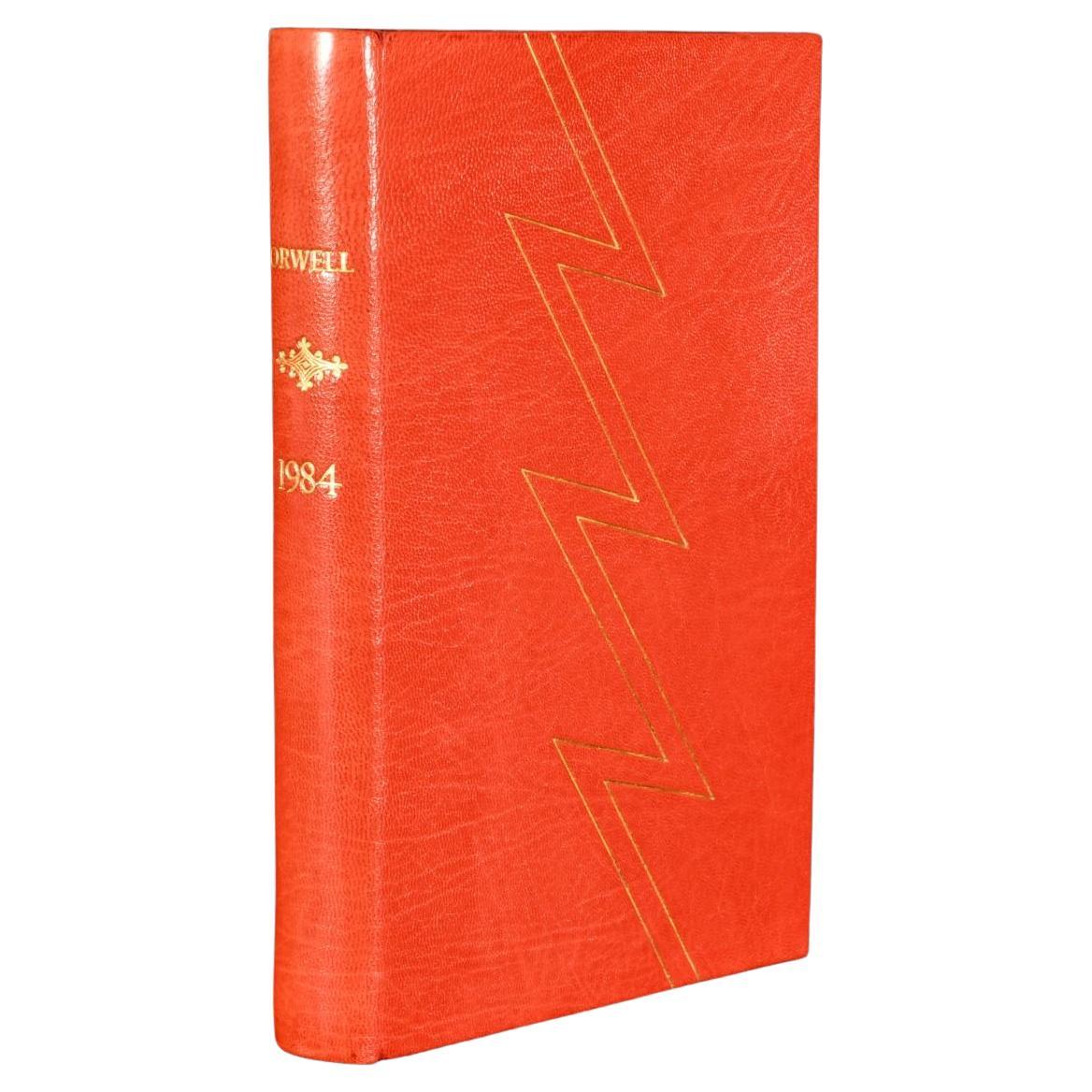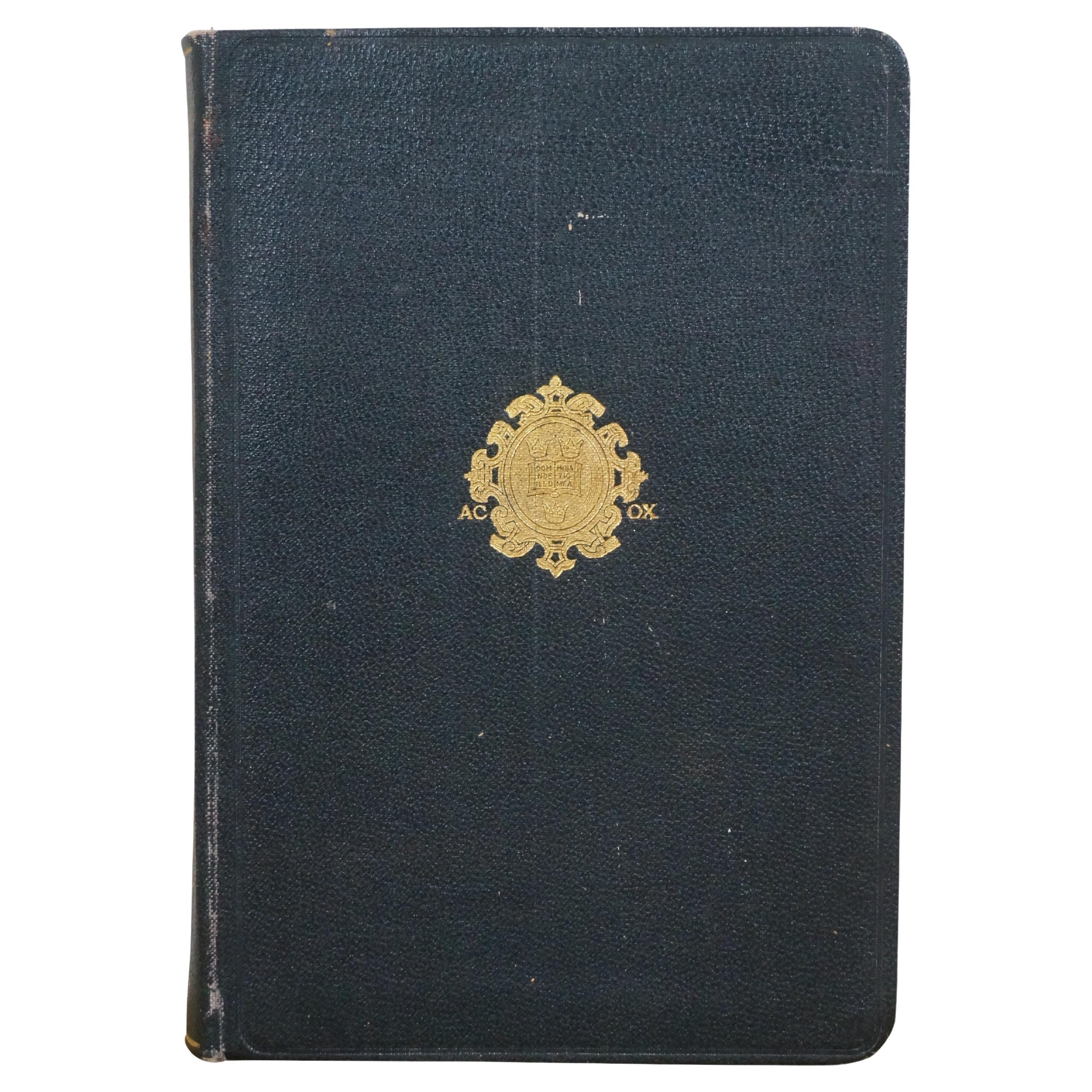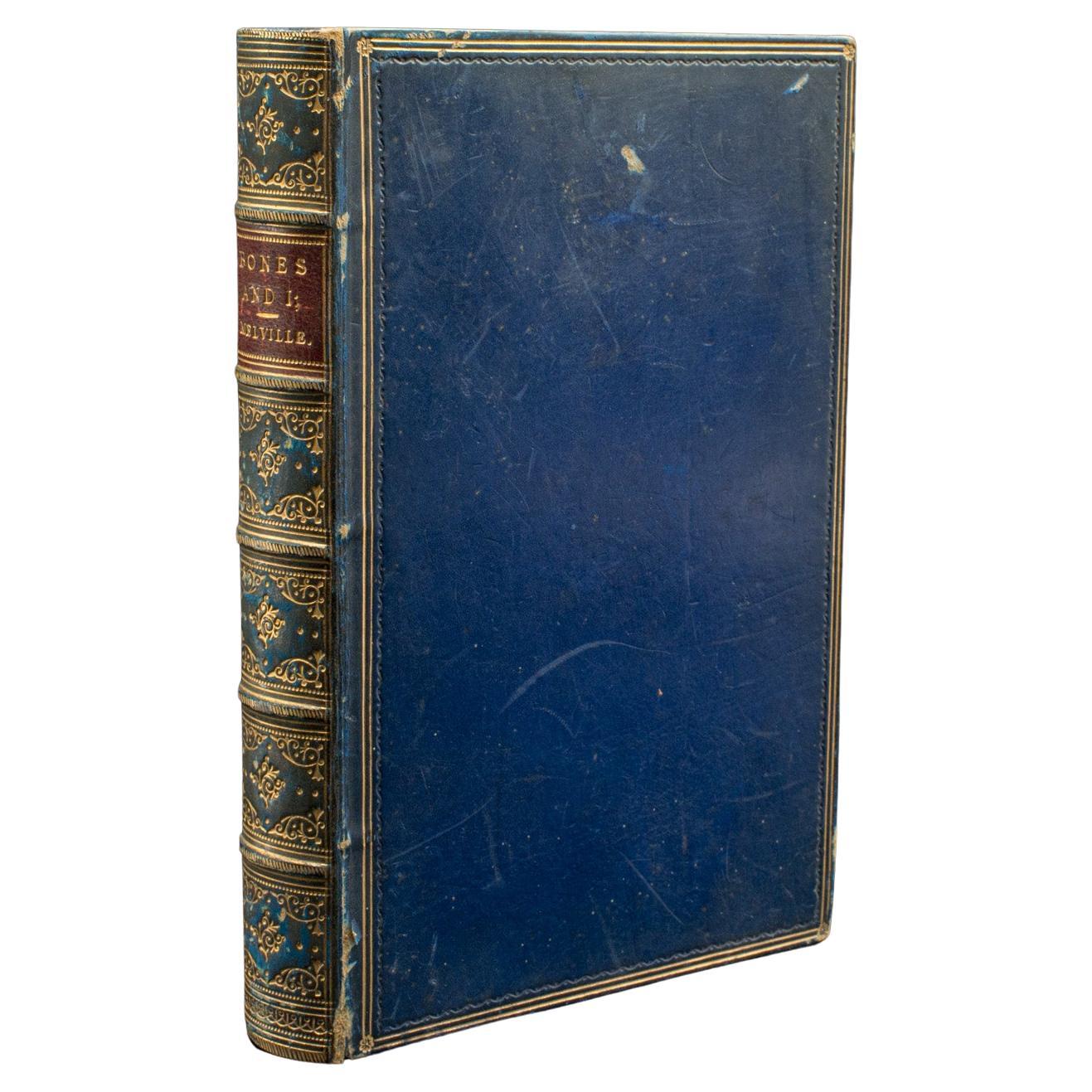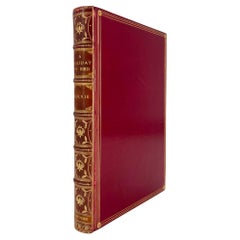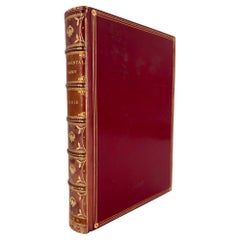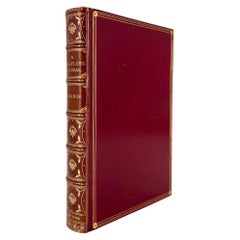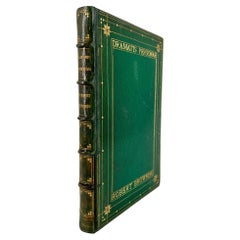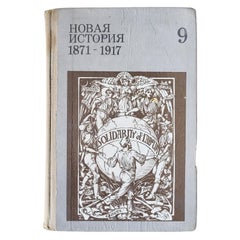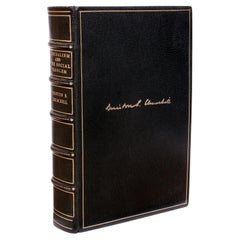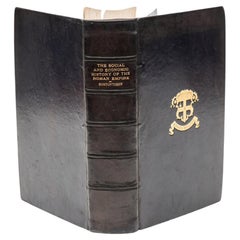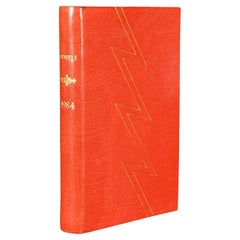Items Similar to An Unsocial Socialist by George Bernard SHAW
Want more images or videos?
Request additional images or videos from the seller
1 of 5
An Unsocial Socialist by George Bernard SHAW
$4,000
£3,036.73
€3,473.37
CA$5,588.58
A$6,215.72
CHF 3,245.66
MX$75,638.71
NOK 41,451.98
SEK 38,874.65
DKK 25,923.12
Shipping
Retrieving quote...The 1stDibs Promise:
Authenticity Guarantee,
Money-Back Guarantee,
24-Hour Cancellation
About the Item
Rare first issue of the first edition for Bernard Shaw’s first published novel.
Shaw, George Bernard. An Unsocial Socialist.
London: Swan Sonnenschein, Lowery & Co., 1887.
First Edition, First Issue.
Crown 8vo, 7 3/8 x 5 inches (188 x 126 mm); [4] 256 pp.; original red cloth, stamped in gilt on spine and covers, a little rubbed and soiled, spine slightly faded, hinges weak; dark brown endpapers; foxing on first 2 and last 2 sheets. First edition, first issue with "Author of The Confessions of Byron Cashel's Profession etc. etc." to title and no appendix. Ink inscription of Mrs Walter Crane on half title.
[Broad, p. 87; Magill p. 965]
This is Shaw's first published novel. It had been serialized in "To-Day, A Monthly Magazine of Scientific Socialism" between March and December of 1884. This printing was promptly canceled, and supposedly only samples for booksellers and travelers had been sent out with this title-page.
Having attended a meeting by political economist Henry George in September 1882, Shaw became fascinated with Socialism, read Marx and became a member of the Fabian Society in September 1884, writing their first manifesto later that year. He believed in a more moderate, non-violent form of socialism and believed that socialist ideals could best be achieved by infiltration of people and ideas into existing political parties. In the early 1880s Shaw also began his literary career by writing music and art criticism and began writing novels, of which An Unsocial Socialist was the first published. But as his career as a playwright started taking off in the latter part of that decade, his political activities also decreased.
Shaw later explained that he had intended An Unsocial Socialist as the first section of a monumental depiction of the downfall of capitalism. Gareth Griffith, in a study of Shaw's political thought, sees the novel as an interesting record of conditions, both in society at large and in the nascent socialist movement of the 1880s. [Griffith, Gareth. Socialism and Superior Brains: The Political Thought of George Bernard Shaw. London: Routledge, 1993].
The story centers on Sidney Trefusis, a millionaire socialist, who leaves his bride on their wedding day because he fears his passion for her will get in the way of his plans to overthrow the British government. Sidney vanished "underground"--Disguises himself as a common laborer called "Mengels"--and infiltrates Alton College, a girl's school where well-bred young women are "fitted and fatted to be put on the marriage market". His plan: take over the school and plant the seed of radical socialism into the fertile brains of the future consorts of cabinet ministers and kings. What he doesn't plan on is the presence of one Agatha Wylie, a sixth-form rabble-rouser, who falls hopelessly in love with both Sidney and his politics, and just happens to be his deserted wife's cousin. Love triangles, mistaken identities, Marx, Engels, pistols and the proletariat jostle for position. (via LibraryThing)
An unusual ASSOCIATION COPY with ink inscription and address of "Mrs Walter Crane" [ie Mary Crane] on the half title. Walter Crane married Mary Andrews in 1871 and after a sojourn in Rome returned to London in 1873 living first in Wood End and then at Beaumont Lodge, Shepherd's Bush (the address she has written in this book). In 1914 Mary Crane was found dead on a railway track at Kingsnorth in Kent, apparently having committed suicide. Walter Crane was devastated and died just 3 months later. Walter Crane and Shaw were closely associated through the Arts and Crafts movement and the Fabian Society. On p.65 the author writes "Don't lose heart, ladies" said Smilash. "She may be drowned or murdered for all we know. Anyone may send a telegram in a false name. Perhaps it's a plant. Let's hope for your sakes that some little accident - on the railway for instance - may happen yet." Considering the nature of Mary Crane's probable suicide this foretelling is particularly ominous.
- Dimensions:Height: 7.38 in (18.75 cm)Width: 5 in (12.7 cm)Depth: 1 in (2.54 cm)
- Materials and Techniques:
- Place of Origin:
- Period:
- Date of Manufacture:1887
- Condition:Wear consistent with age and use.
- Seller Location:Middletown, NY
- Reference Number:Seller: BH4541stDibs: LU8340233997682
About the Seller
5.0
Vetted Professional Seller
Every seller passes strict standards for authenticity and reliability
1stDibs seller since 2023
15 sales on 1stDibs
Typical response time: 9 hours
- ShippingRetrieving quote...Shipping from: Middletown, NY
- Return Policy
Authenticity Guarantee
In the unlikely event there’s an issue with an item’s authenticity, contact us within 1 year for a full refund. DetailsMoney-Back Guarantee
If your item is not as described, is damaged in transit, or does not arrive, contact us within 7 days for a full refund. Details24-Hour Cancellation
You have a 24-hour grace period in which to reconsider your purchase, with no questions asked.Vetted Professional Sellers
Our world-class sellers must adhere to strict standards for service and quality, maintaining the integrity of our listings.Price-Match Guarantee
If you find that a seller listed the same item for a lower price elsewhere, we’ll match it.Trusted Global Delivery
Our best-in-class carrier network provides specialized shipping options worldwide, including custom delivery.More From This Seller
View AllA Holiday in Bed and Other Sketches – J. M. Barrie, creator of PETER PAN
Located in Middletown, NY
Philadelphia: New York Publishing Company, 1892.
First Edition
Small 8vo., 7 3/8 x 5 inches (188 x 127 mm), pp. 180, printed on heavy laid paper and illustrated with a frontispiece ...
Category
Antique Late 19th Century American Books
Materials
Gold Leaf
Sentimental Tommy, The Story of His Boyhood – J. M. Barrie, creator of PETER PAN
Located in Middletown, NY
London: Cassell and Co., 1896.
First Edition.
Small 8vo., 7 3/8 x 5 inches (188 x 127 mm), pp. viii + 452 + 4 of publisher's advertising. Red calf binding by Root & Son (stamp on f...
Category
Antique Late 19th Century English Books
Materials
Gold Leaf
A Tillyloss Scandal by J. M. Barrie, creator of PETER PAN
Located in Middletown, NY
\New York: Lovell, Coryell and Company, 1893.
First Edition, Second Issue.
Small 8vo., 7 3/8 x 5 inches (188 x 127 mm), pp. 270. Beautifully bound by Root & Son in red calf with go...
Category
Antique Late 19th Century American Books
Materials
Gold Leaf
DOVES PRESS: Dramatis Personae by Robert BROWNING
Located in Middletown, NY
London: Doves Press, 1910.
Limited Edition
Small 4to, 9 1/8 x 6 3/8 in. (230 x 160 mm); 203 + [7] pp.; one of 250 copies, with an additional 15 on vellum...
Category
Early 20th Century English Books
Materials
Leather, Paper
Essays by Ralph Waldo Emerson, with Preface by Thomas Carlyle
Located in Middletown, NY
The only book published by the Doves Press by an American author.
Hammersmith: The Doves Press, 1906. Small 4to, 9 1/4 x 6.5 in (235 x 166 mm). Pp. xiv, 13...
Category
Early 20th Century English Books
Materials
Gold Leaf
Half Hours by J. M. Barrie, the creator of PETER PAN
Located in Middletown, NY
London: Hodder and Stoughton, 1914. FIRST EDITION
Small 8vo., 7 3/8 x 5 inches (188 x 127 mm), pp. vi + 207. Beautiful red calf binding Red calf binding by Root & Son, with gold fill...
Category
Early 20th Century English Books
Materials
Gold Leaf
You May Also Like
Vintage Soviet History Book: 1871-1917 for 9th Grade Students circa 1987, 1J47
Located in Bordeaux, FR
Step back in time and delve into the intriguing period of history with this vintage book from the USSR. Specifically designed for 9th grade students, this book offers a comprehensive...
Category
Vintage 1980s Books
Materials
Paper
Winston CHURCHILL. Liberalism And The Social Problem - FIRST EDITION - 1909
Located in Hillsborough, NJ
AUTHOR: CHURCHILL, Winston.
TITLE: Liberalism And The Social Problem.
PUBLISHER: London: Hodder & Stoughton, 1909.
DESCRIPTION: FIRST EDITION. 1 vol., 7-7/16" x 5-1/8", bound in ...
Category
Antique Early 1900s British Books
Materials
Leather
1 Vol. M. Rostovtzeff. The Social & Economic History of The Roman Empire.
Located in New York, NY
1. Vol. M. Rostovtzeff. The Social & Economic History of The Roman Empire. Bound in full blue calf, top edged gilt, raised band, marbled endpapers, illustrated. Published: Oxford, Cl...
Category
20th Century English Books
Materials
Leather
1949 Nineteen Eighty-Four
By George Orwell
Located in Bath, GB
The first U.K. edition of George Orwell's important and culture defining dystopian novel, a superb finely bound copy.
The first UK. edition, with 'First published 1949' stated to th...
Category
Vintage 1940s British Books
Materials
Paper
1927 Dictionary of Modern English Usage H.W. Fowler Oxford Antique Leather Book
Located in Dayton, OH
A Dictionary of Modern English Usage - by H.W. Fowler - Published by G.P. Putnam's Sons, 1927 - Printed in England at the Oxford university Press by John Johnson - Soft cover, black ...
Category
Vintage 1920s Books
Materials
Leather, Paper
$372 Sale Price
20% Off
Antique Book, Bones and I, Whyte-Melville, English, Novel, Victorian, Circa 1880
Located in Hele, Devon, GB
This is an antique book, Bones & I by George Whyte-Melville. An English language, bound novel, dating to the late Victorian period, circa 1880.
First published in 1868, Bones & I is a humorous novel written about a man - Jack Raggles - who gains possession of a human skeleton. Written by George Whyte-Melville (1821 - 1878), the book is a comedic and macabre blend of satire and class division.
Nicely presented example of this unusual title
Displays a desirable aged patina, lightly time-worn but intact
Bound with cloth over board in navy blue with gold...
Category
Antique Late 19th Century British Late Victorian Books
Materials
Paper
More Ways To Browse
3 Cranes
19th Century Sheet Music
Triangle Cabinets
Crown Crane
Crowned Crane
Sheet Music Cabinet
Antique Sheet Music Cabinets
Red Crowned Crane
Mengel Furniture
Wedding Cabinet Red
Shaw Furniture Co
Antique Seed Cabinet
Rolling Stones Taschen Books
Slim Aarons Book
Speer Collectibles
Vanessa German
Vintage Ledger Book
Zelda Fitzgerald
